Spotlight: Sandra Laronde
Imagine a beacon to a future that promises hope.
In the Anishinaabe seven-fires prophecy, there is a beacon in the great, pre-contact westward migration of the Anishinaabe from the Atlantic to the Great Lakes — from salt to freshwater. This prophecy is the theme of Red Sky Performance’s latest production, Miigis: Underwater Panther, directed and choreographed by Sandra Laronde.
Miigis: Underwater Panther opened at Canadian Stage last month, and it’s about to embark on an extensive tour of Canada and the United States. Integrating dance, music, theatre, image, and Indigenous architectural forms, Miigis tells a story that migrates from prophecy to history, from hope to apocalypse, and back to hope again.
Sandra Laronde, a multidisciplinary artist and Red Sky’s artistic director, has been a beacon of powerful Indigenous performance throughout her extraordinary career. Brendan Healy, artistic director of Canadian Stage, believes the work of Red Sky is itself prophetic of a major paradigm shift in performing arts.
“It’s a moment,” he said in an interview. “Sandra is laying down a pathway. Twenty to thirty years from now, we’ll look back at the way Sandra and the handful of others are forging a pathway for performance in this land, and see how extraordinary it is.”
In my mind, Canadians never will understand themselves as Canadians without the Indigenous narrative and canon that comes from here.
Sandra Laronde
This pathway entails creating strong, narrative performance which integrates multiple disciplinary layers. As artist and Indigenous advocate Jules McCusker, describing his experience as a Red Sky Performance audience member, explained in an interview, “what you see is the emotion of the movement. The music is absolutely astounding. It is so evident as an integral component of the performance. And then when you put it into choreography, now you’ve got the ancient ritual performance theatre art.
“Art was always about movement, and the music and the tonality and the emotion all coming, rushing, and working together simultaneously in perfect sync, so that you get an emotional response and complete captivation of the audience,” said McCusker. “I was watching people in the seats next to me. Riveted.”
Laronde has worked skillfully and tirelessly to bring the culture of arts in Canada (and beyond) to this moment where dance and theatre audiences can be captivated by the power of Indigenous performance.
“The big challenge at the beginning of my career,” she told me in an interview, “was that I knew that people thought that any Indigenous performance onstage was going to be mediocre. I had to change that mindset. And, that is no easy feat. In Toronto, presenters and programmers talk about bringing cultures from all over the world and downloading their artistry here in the city. But how about uploading culture from this land, from the original peoples, to help Canadians understand who they are? In my mind, they never will understand themselves as Canadians without the Indigenous narrative and canon that comes from here. My life’s work is to move our narrative and story to the centre and help others to see that we are the DNA of Canada. We are the heartbeat of Canada.”

Over the course of her career, Laronde has worn many hats to realize this centering of Indigenous narratives. She has been the artistic director, director, choreographer, and producer of Red Sky Performance since she founded the company in 2000. She’s brought over 3,000 performances to over 21 countries over four continents. She was also founder and director of Native Women in the Arts (NWIA) from 1993-2008, where she fostered and produced performances, concerts, exhibits and symposiums, as well as community development projects in leadership and traditional knowledge. In parallel with directing Red Sky, she was Director of Indigenous Arts at the Banff Centre for Arts and Creativity for nine consecutive years (2007-2016), and she’s worked with the Toronto Symphony Orchestra, as well as Regina, and Winnipeg Symphony orchestras.
Laronde’s talents also extend to creative writing, and her novel for young adults, She Holds Up the Stars, was published by Annick Press in 2022 and was considered one of the Best Books for Kids and Young Adults by CBC Books in that year.
Unsurprisingly, given her track record, Laronde has been the recipient of numerous accolades and awards. She’s also played a crucial role as a cultural ambassador, participating in trade and diplomatic missions all over the world. For example, she has represented Canada at Canadian Heritage’s first Creative Industries Trade Mission to China, the Trade Mission to Europe in 2022, Canadian High Commission in Mongolia, Global Affairs Canada to Sweden, and as an official delegate at the ASSITEJ World Congress in South Africa, to name a few. When asked what qualities have enabled Laronde to pursue such a big vision so persistently and successfully, Healy identified a clear aesthetic and vision alongside curiosity, grit, generosity, and love. “Sandra is resolute and determined and driven by a deep love for performance and for Indigenous culture,” he said.
When I asked McCusker the same question, he described Laronde’s ability to work persistently toward her vision as reflecting a way of thinking that encompasses web-like thinking, with circularity as well as straight lines. He sees this as a form of matriarchal thinking that is key to her legacy, and one that has allowed her to transcend the ongoing struggle of finding a way to fit into the colonial landscape.
Sandra is resolute and determined and driven by a deep love for performance and for Indigenous culture.
Brendan Healy
As for Laronde’s own origin story, she grew up in the remote community N’Daki Menan, which means “our homeland” in Anishinaabemowin. She is from the Teme-Augama Anishinaabe (People of the Deep Water) in Temagami, Northern Ontario. Surrounded by numerous cousins, aunts, and uncles, her earliest and enduring influences were her family, cultural stories, and the land.
“My family is very creative,” she told me. “There was lots of live music. It wasn’t unusual to hear three guitars being tuned at the same time in my home growing up and it is still a sonic trigger of home wherever I might be.”
“Both of my parents are Indigenous. My mother loved to dance, and my father loved music and was also a hunter, guide, and fisherman. He loved the land, my mother too. They both were so hardworking, and I inherited that strong work ethic. Imagine raising five kids with no hot running water. My mother really worked hard.”
Laronde remembers that as a kid she would be in her room at night when her parents had occasional get-togethers. She only had a curtain instead of a bedroom door, and she would arch her back over the bed and watch people’s dancing feet while she was upside down. She could only see their feet, but she would imagine all of the rest. “I think that’s why, to this day, I love turning things on their head.”
Laronde’s vision has also been hugely shaped by the land where she grew up. “The magic of the place where I’m from, where I can see the sky at night. I can see the Milky Way. I can see shooting stars, and when I look at the bottom of the lake, it looks as though the stars are sitting at the bottom of the lake because the water is so clear. My eye could travel great distances where I’m from. My eye and, therefore, my imagination could roam freely. I think that makes for a different kind of vision, because you’re seeing things on a grander scale. I truly believe that the spirit of land climbs right inside of you, and you carry it with you wherever you go.”

Laronde’s path led her from Temagami to study at the University of Toronto, where she received an honours degree in philosophy with a year abroad spent at the University of Granada in Spain. She was very energetic and athletic growing up in Temagami, and was known around her community as a sprinter. From sports, she moved into martial arts, dance, and theatre. However, like many girls from her background, she was also painfully shy at that time. She started engaging with theatre through movement — via physical theatre and dance — and from there found her voice.
Native Women in the Arts (NWIA) was the first company Laronde founded herself. Her work there involved creative programming and working closely with the community.
“This is a good way to build because you’re so close to the ground and responsive and you get to know so many people on a personal level,” she said. “NWIA was a beast with its belly close to the ground. That’s the way it walked, slowly and absorbing everything. It was about being close and responsive. And after that I wanted to build something that moved more quickly, had wings, and could fly — which became Red Sky. I think because of that work with NWIA, the star of Red Sky could rise so quickly. As a result, I had all this know-how, creativity, and extensive networks, which I believe is one of the reasons why the Banff Centre wanted me as the Director of Indigenous Arts at the Centre.”
She doesn’t re-victimize. I don’t know how she does it, but it’s done in a way that’s brutal at times, very painful, but there’s such strength and resilience and power despite it all.
Brendan Healy
Red Sky’s productions centre Indigenous narratives. For instance, Backbone (2018) is about Indigenous mapping. Laronde describes boating in Temagami with her partner and realizing they looked at maps differently.
“Maps were created by kings and queens to conquer and take control of land,” she said. “I realized that my partner was looking at obstacles, where the boat could crash and what he had to watch out for. That was not at all how I saw a map of the lake at all.”
“Our sense of geography was different. Backbone is about a way of seeing land from an Indigenous perspective. We see it as a ‘backbone’ of the Americas, which is the Canadian Rockies to the American Rockies to the Andes. It’s the backbone of our earth, our mother who is alive, sentient, and contiguous. With Red Sky, I’m seeing through a different lens, where all things are sentient.”

Trace (2019) was about bringing Indigenous sky and star stories to stages. “I remember I was in Temagami looking up at the night sky, at Orion and Big Dipper. I wondered how come we only know Roman and Greek constellations and stories. What are the Indigenous sky and star stories, and why don’t we know them? Our point of view is not Greek or Roman. Geographically, the stars look different from Canada. Essential stories are encrusted in constellations as they reflect a cultural psyche. We look up to the night sky to reflect who we are. So, as Canadians, we know Greek and Roman star stories, but then we wonder why we don’t know who we are as Canadians. It’s because we don’t see our reflection back to ourselves.”
Of course, who we are as Canadians includes a brutal colonial legacy. With Miigis, Laronde took a new creative risk by portraying some of that history.
“I’m talking about a theme that’s difficult for a lot of Canadians. I’m addressing colonization and what was brought to our shores, as colonizers were escaping pestilence and religious persecution from their own countries and fleeing to Canada. I’m bringing audiences on this journey into a very powerful nightmare that informed why we had to move in the first place. We had to move because we knew that European colonizers were coming as it was prophesized. The dispossession of peoples, the devastation of land, and the slaughter of animals was all part of a huge land grab and a colonial mindset of take, take, take. And later residential schools and other forms of genocide followed.”
McCusker describes this imagery as “an example of our plight. The term plight is very specific. It’s layered with resilience.”
For his part, Healy emphasizes the power of Laronde’s work is that she presents Indigenous people in positions of strength. “She doesn’t re-victimize,” he told me. “I don’t know how she does it, but it’s done in a way that’s brutal at times, very painful, but there’s such strength and resilience and power despite it all.”
Laronde added that the power of story can offer a gateway to reconciliation.
“There are so many entry points into story and that’s part of the generosity,” she said. “Stories are porous and that’s what makes it really powerful. You’re not pontificating. You make them feel and open their hearts and minds, and you lift them. The arts have a ‘lift’ that politics could never do. It is hopeful.”

One of the characters portrayed in Miigis is the woman who has the dream that inspires the great migration.
“It was a migration of hope,” said Laronde. “It came as a vision, and someone had to implore people to move. You would have to have a special energy for that.”
To an outside ear, that sounds like a description of Laronde herself.
“Wisdom does not just live only in human beings,” Laronde pointed out. “In fact, human beings are rather constricted and limited, and wisdom lives in so many other places. And I would dare to say so does love — in water, in trees, and in the beautiful soft caress of wind, and in animals too.” In contrast to a world of consumption and political intolerance and climate disaster and fear, through her art and words Laronde holds up a beacon — a desperately needed vision of love and respect within a sentient world.
Stories are important to Laronde because story reminds us of our true selves.
“I want audiences to feel connected to the electrical charge of story,” she said. “Stories help us to navigate and make sense of things. Without stories, we would be very lost and disconnected, and there would be more mental health issues without stories. The most powerful things are the stories we tell ourselves – as a country, as a nation. I want people to walk out feeling inspired. I want them to feel larger than when they walked through the door in the first place.
“They will feel this way because they are connected to the epic size of story, the power and the beauty of story. And I want them to know there is a tremendous Indigenous canon of Canada.”

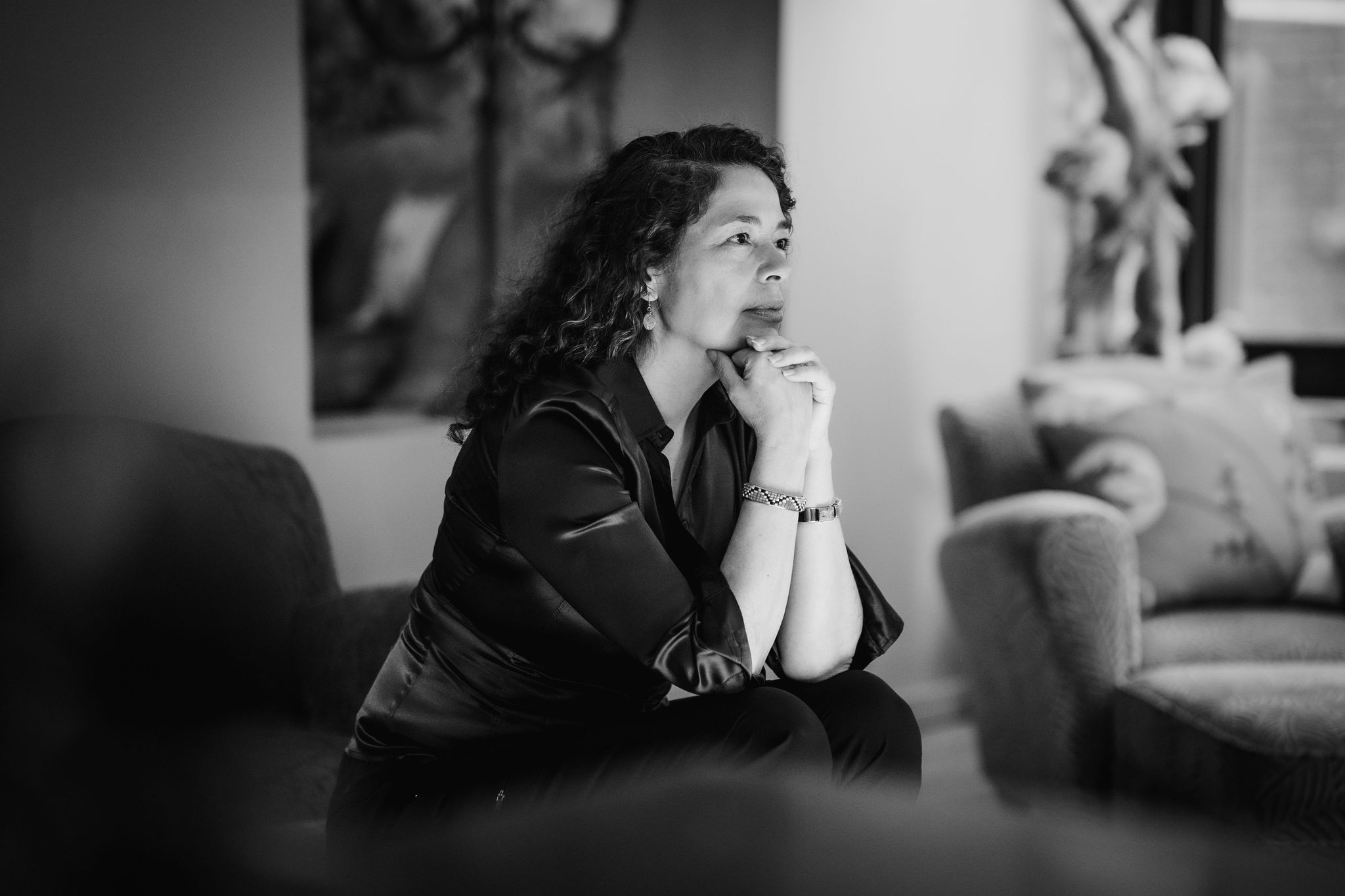

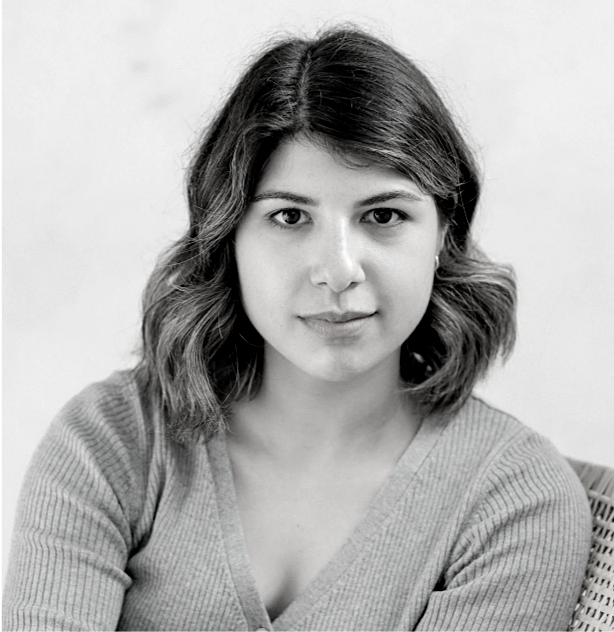



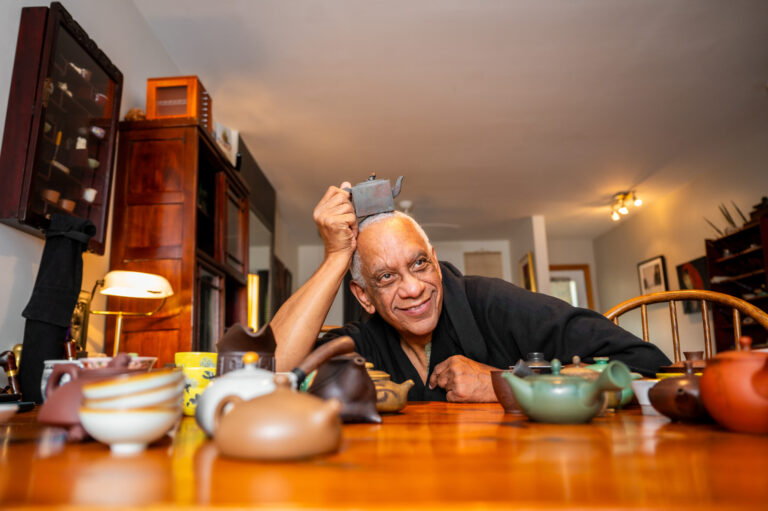
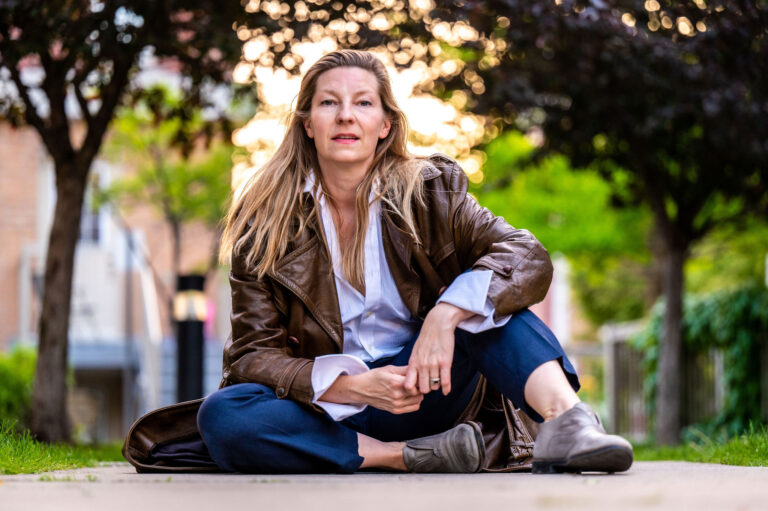
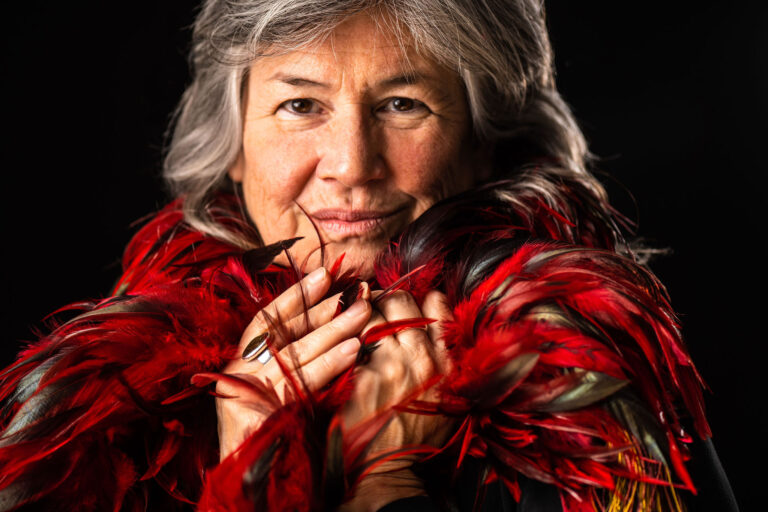
Comments